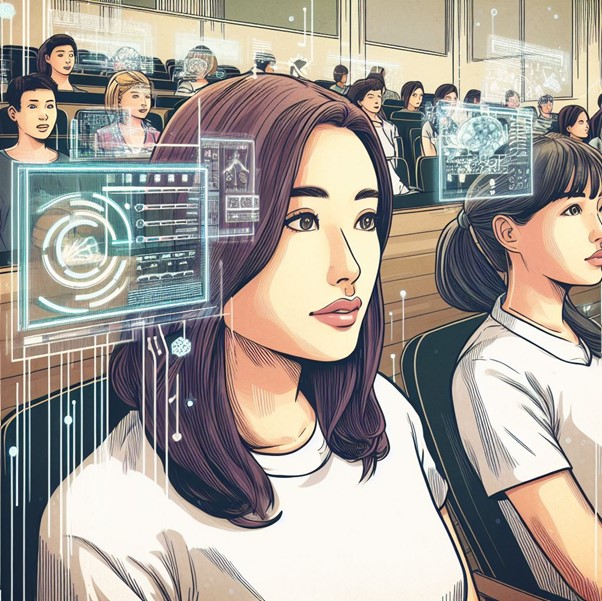By Liz Alvey
As a preview of next week's Educ-AI-Tion week, Liz Alvey revisits her post from last year about the best ways that educators can use Google Gemini.
I originally wrote this blog in autumn 2023; and although 13 months is a long time in the world of Generative AI, much of my approach has remained the same. I’ve made some tweaks, added a bonus tip, and Gemini and I are heading back into the classrooms again. Here’s an approach that I seem to have settled on
- Tip 1: Establish a transparent AI policy
You should share your ground rules with your students at the beginning of the session, and make it clear what is permitted. Students will worry less about inadvertently ‘cheating’ if the expectations are explicit. Even if students are vaguely aware of the university guidance, they appreciate reassurance from you about what is permitted in this context.
- Tip 2: Cater to Diverse Learners’ Prior Experience
Some of your students could well be prompt engineering wizards, and are likely to know a lot more than you. However, up to about a third of the students in the biosciences say that they have never heard of Gemini, or have never used it. This has not changed as much as I had expected. When planning your activities, ensure that you start from the beginning so that all your students can join in. I show students where to find Gemini under My Services, and then provide some light-hearted prompts for students to experiment with.
Example prompt: ‘Knowing that I love [studio Ghibli], suggest names for my new [robot hoover]’
- Tip 3: Expect Initial Exploration
For anyone who is using Gemini for the first time, their initial prompts may not work as hoped. It can then be very tempting to conclude that the model is incapable of the task and give up. To overcome this, I suggest you provide students with customisable prompts. In my case, I am teaching enterprise and sustainability to Level 2 bioscience students and give them this prompt to get them started with their brainstorming.
Example prompt: Act as a [CEO of a university spin-out biotech company specialising in enzymes]. How could you contribute to tackling the UN SDGs? List [10 ideas].
Thinking about the future of our graduates, I invited all final-year students to a prompt engineering workshop designed to help them prepare for job interviews. My timing couldn’t have been worse. In May, the graduating students were overwhelmed with deadlines and exam anxiety, and not a single student showed up to my session! Surprisingly, two (uninvited) lecturers
did show up; and we had an enjoyable hour role playing with ChatGPT. Now we aim to use Gemini with students little and often; and only introduce a new prompt when students need it. Taking inspiration from Google’s
Prompting Guide 101 for Workspace, we’ve made a
Google Site to curate the customisable prompts we introduce on the way.
- Tip 5: Choose Suitable Topics
Many writers find GenAI a helpful tool to overcome the paralysis of a blank page. To help them get started with their first essays, I asked my tutees to generate several essay plans using ChatGPT; and then critically evaluate them. This activity failed to inspire much conversation between the students and I now realise that they did not have sufficient background knowledge of the essay subject to critically evaluate suggested plans. In fact, they struggled to have any opinion at all. If the aim of the lesson is to train students to apply their critical thinking skills to AI-generated text, ensure that you choose a topic that the students are comfortably familiar with (e.g. the synopsis of their favourite film). The students need to feel confident that they know what a good output would look like.
- Tip 6: Emphasise Fact Checking
Sometimes the outputs from GenAI can be incorrect. I used to illustrate this by asking Bard to tell me what colour bins will be collected from my street today (it lied! It lied convincingly). However, now (October 2024) the response from Gemini is much more cautious and I’m told "to find your specific bin collection schedule, you can use the following methods:..." Accurate, yet unhelpful! Just tell me the answer! Perhaps I should never have used Gemini for this task in the first place (see bonus tip below). Whatever you are asking your students to do, take care to emphasise that the student is responsible for the accuracy of the work they produce, so they must embrace their inner diligent fact checker when putting any Gemini output into action.

I heard an anecdote today of someone using a Gemini for a simple calculation that could have trivially been performed on any calculator (e.g. 5 x 7=?). Generative AI is not free. In fact, it is environmentally very expensive. Since stumbling upon this eye-opening article from JISC, I warn students to be considerate in their AI use, and to ensure they use the right tool for the job.
Resources:
Liz is a Senior Lecturer in the School of Biosciences and a plant scientist. She is passionate about creating an outward-facing curriculum that connects students with the real world. She also enjoys developing innovative teaching approaches that challenge students to apply their skills in new ways.


